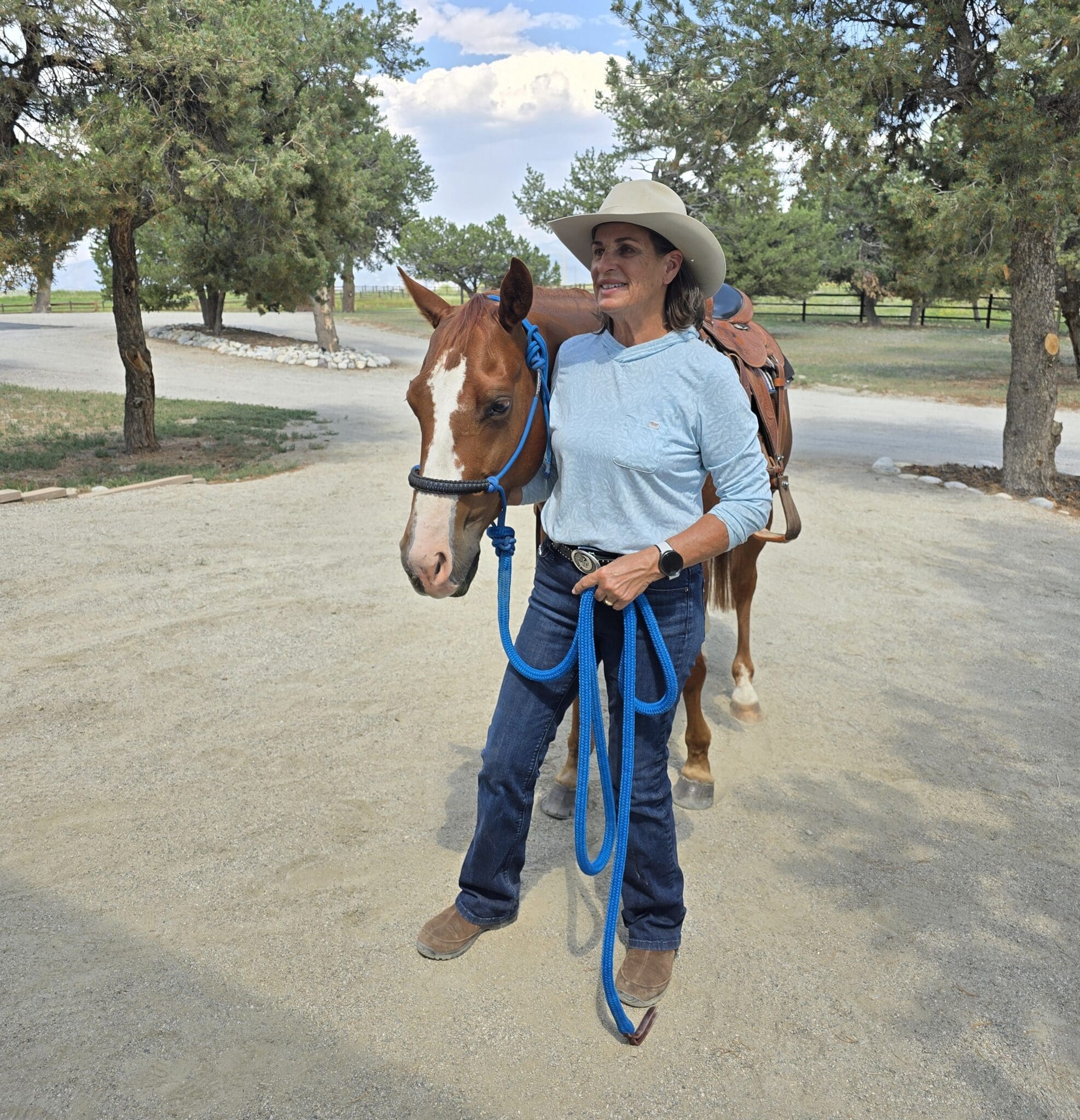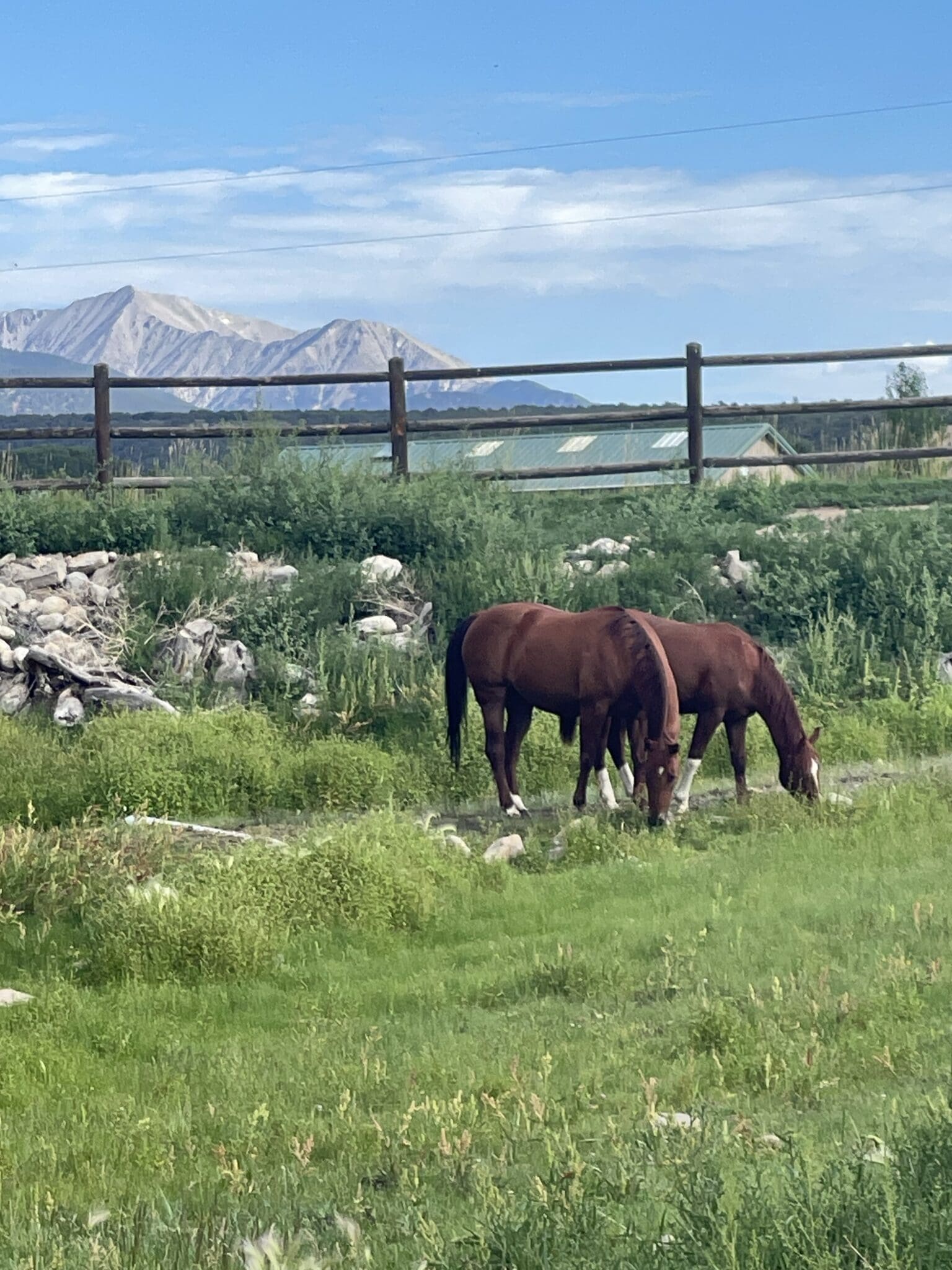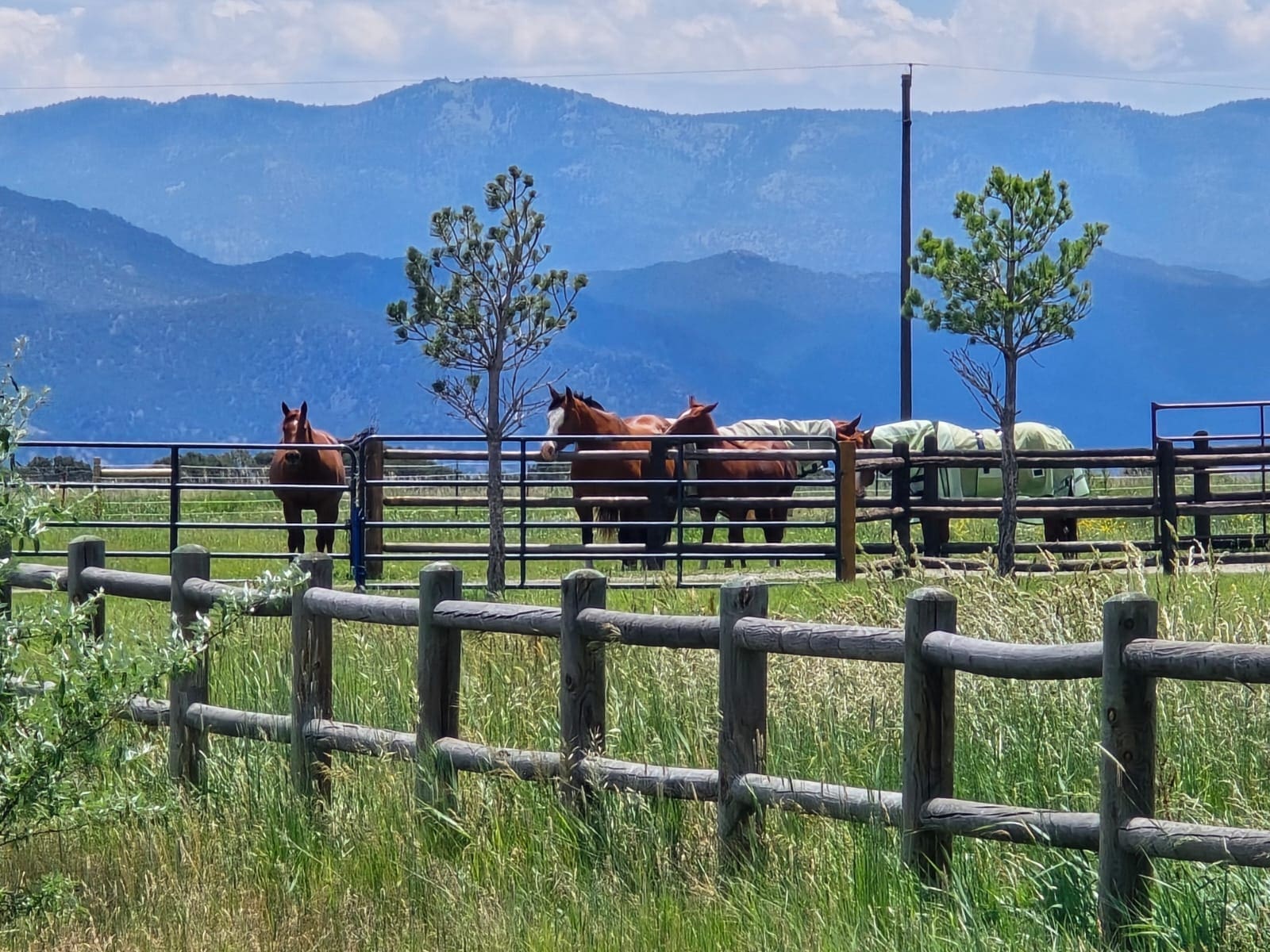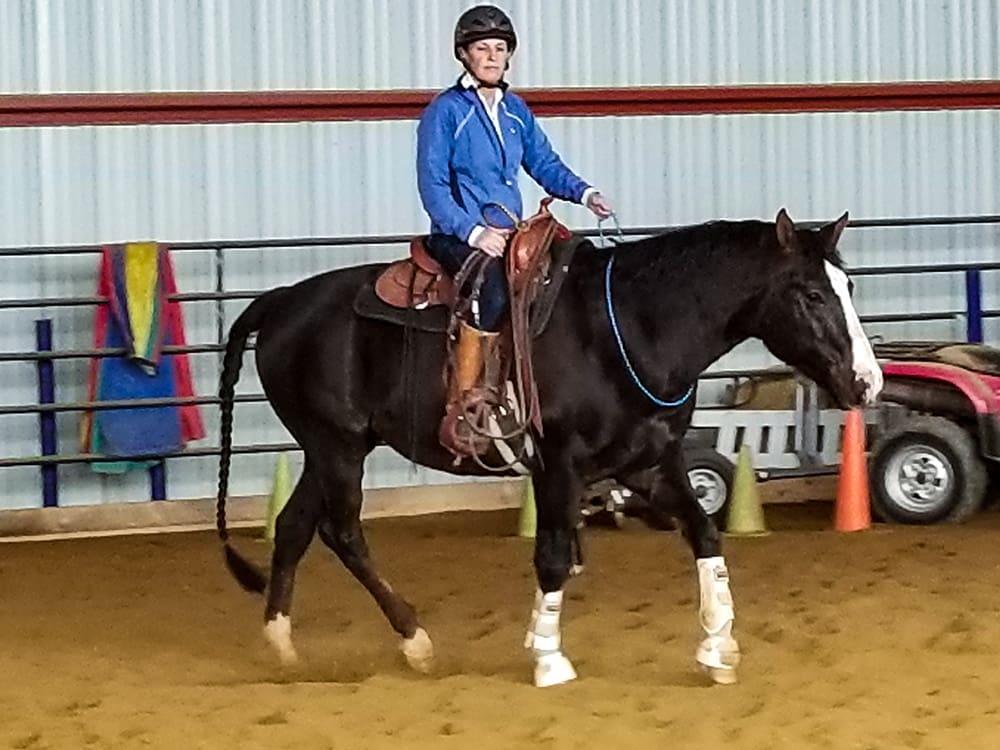
Horses rise or fall to your level of expectation, no matter how high or low. If you think he’s going to spook at something, he generally will. If you think he is going to throw a fit about getting in the trailer, he will oblige (especially if his emotional outbursts have gotten him what he wanted in the past). On the other hand, when your expectations are high, and you have clear parameters of obedient and compliant behavior, he steps up.
It shouldn’t come as a huge surprise that horses will respond to your expectations. After all, they’re herd animals— instinctively drawn to the herd, which provides the comfort and security they yearn for. Keep in mind that membership in the herd is not automatically granted—each horse must earn it; and once granted, a horse must follow the rules of the herd and be a good herd mate (meet expectations) in order to maintain his status. A good citizen is one that respects the hierarchy of the herd and lives up to the expectations of the leader.
Keep in mind that horses not only live in cooperative groups, they’re also extremely communicative. While us humans rely heavily on the spoken/written word to communicate (often believing words more than the physical evidence before us), horses communicate primarily with postures, gestures and actions. And horses never lie.
Learning to have clear and lofty expectations of your horse, to convey those expectations with consistent and unambiguous actions, to control your own emotions and be aware of the body-language message you present your horse, is all it takes to have a compliant and willing horse that worships the ground you walk on.
My Herd, My Rules
Horses know leadership when they see it; they seek out authority, because it makes them feel safe. Having been around horses well over half a century, literally working with thousands of individuals over the years, I’ve learned to first have expectations and boundaries, and then convey them to any horse I encounter—immediately. The first part of the equation is critical—knowing what behavior you expect from your horse, and therefore knowing when he is compliant and when he is not. That seems easy, right? But if I asked you to state three simple and clear expectations of your horse right now, could you?
Because I am abundantly clear on my personal boundaries and I have a few fundamental rules of behavior that I expect from any horse, a horse learns my rules within a couple minutes of our first interaction. Horses love clarity and consistency; they’re lightning-fast learners, given the right conditions for comprehension (timing and pressure). So in a few short minutes, a fussy, tantrum-throwing horse can become a model citizen, looking to me with deference and willingness, because my expectations have become clear and his compliance is non-negotiable.
Horses are good at following rules, when rules are clearly defined and consistently enforced, because that is what life is like in the herd. But long before you can “enforce” the rules or “enforce” a boundary, you have to know the rule, be clear on the boundary yourself and have high expectations of your horse’s behavior.
One reason we do groundwork with horses, is to establish these rules and boundaries and to build a relationship with your horse wherein he looks to you for direction and eagerly does your bidding. Whether it takes you minutes, days or weeks to become the leader in the eyes of your horse, depends on you. Horses come along quickly when presented with consistent and fair leadership.
Talk the Talk
Once you know your own boundaries and have clear expectations of your horse’s behavior, it’s time to convey those expectations to your horse. The message needs to be simple, clear and consistent and conveyed without emotion. Both reward and correction are meted out fairly—his actions have consequences, for better or for worse.
For instance, a very basic expectation I have of any trained horse, is that he moves his feet when I ask him to and stands like a statue if I ask him to. I’ll ask him to stand without moving in the exact same way 100% of the time (facing him with my toes pointed at his shoulder and saying, “Whoa.”). And 100% of the time, I will correct him appropriately if he moves (a scolding and a bump of the rope) and I will always reward him when he complies (by giving him the greatest gift—leaving him alone). Because my message is clear and the reinforcement or reward comes quickly and has meaning, even a tyrant of a horse will become complaint quickly.
Because horses crave authority, they’re also quite eager-to-please animals, if you have the same respect and admiration they give the herd leader. Because horses want to be accepted in the herd, they’re good at following rules. But for a rule to become law, it must be consistently enforced, and compliance must be mandatory. Sometimes horses understand what behavior is expected of them, but if they learn that reinforcement is lacking, and/or they can employ clever tricks to circumvent the rules and manipulate the human, compliance becomes optional.
To be the maker of the rules and the enforcer of the rules is not easy; to do it with consistency and clarity is even harder. Throw into the mix a thousand-pound flight animal, who may physically intimidate you and who easily learns to push your emotional buttons and being the leader can get downright grueling. The trick is to keep your own emotions in check; as you single-mindedly convey your expectations to your horse. The more emotionally charged your horse becomes, the more granite-like your emotions must be.
Explain the simple rule (don’t move your feet unless I tell you to) or define the boundary (stay behind my shoulder as we walk), then reinforce immediately and with meaningful pressure when the horse breaks the rule; leave the horse alone and take all pressure off the moment he is correct. Reinforcement should come quickly (within a second of the infraction) but should be over just as fast (one and done) and should never be done in anger or retribution. A true leader strives to always be in command of her emotions, to always set a good example and to always speak the truth.
Walk the Walk
It’s hard for a horse to look up to you as a strong and benevolent leader, when you present the picture in your body language of a lost tourist in a foreign land. Words mean nothing to your horse, but your actions, your emotions and your body language tell him everything he needs to know.
Horses crave authority because it brings order, regularity and peace to an otherwise chaotic world. It’s not enough to have expectations, to convey and enforce the rules, you also must comport yourself in a manner that you look like the one in charge, at all times. It’s my goal to make my horse think I am not only in control of his actions, but I control everything in the environment, too. In his eyes, I want to be the supreme commander of the universe. With that, comes not only his trust, but his compliance and willingness, too.
Everyone has self-doubt at times. Everyone. It’s what you do with yourself in that moment that separates leaders from followers. Taking mental and physical control of your emotions, reminding yourself, “I’ve done this before and I can do it now,” and then pushing through that moment of self-doubt, will get you everywhere with your horse (and in life). When you allow self-doubt to creep into your ground-handling or riding of a horse, you become passive and convey the picture of that lost tourist. The horse sees this as a giant opening to either 1) start a mutiny, or 2) abandon ship.
Once you’ve asked a horse to do something, you should continue to ask, with steadfast determination, until you get the right answer. If you’re not committed, or you cannot reinforce the command, it’s best not to ask. Your horse is very keen to your level of confidence, intent and determination. He can see it—or lack thereof—in your body language (where you look, your posture, your gestures, even the look on your face and the way you move).
The key is to act confident on the outside, even though you don’t always feel that way on the inside. Fake it ‘til you make it; never show your weakness on the outside. It’s not that you always feel confident and in-control, just don’t let that negative emotion take over your mind and body. The mind, body and spirit (the mental, the physical and the emotional) are inextricably intertwined. Controlling your mind with positive thoughts and your body language with a show of determination, will keep the negative emotions at bay.
Be the Captain
Of course, you cannot just strut around like a leader and expect someone to follow. You must also be true to your word, consistent and predictable in your actions and have sound judgment in all matters. Say what you do and do what you say. You must recognize the horse’s effort and willingness, just as quickly and vehemently as you offer criticism and reinforcement.
Often, in a moment that really counts with a horse, humans are too caught up dwelling in the past and fretting over the future to notice a horse’s behavior in that instant. Horses exist in the moment—when three seconds go by, it’s like a whole different day to the horse, and the moment is lost forever. Sadly, humans tend to linger in the past (he spooked here before) and jump to the future (what if spooks up there), instead of directing our horse like a true leader, in the moment of his greatest need.
It’s a tall order, what your horse needs from you to feel safe and comfortable in your presence. He needs to know what you expect of him, that rules exist and will be enforced fairly and consistently. He needs you to be strong emotionally, in-control of yourself and others, clear in your intent and consistent in your actions. He needs you to make good decisions, to recognize his efforts and reward his compliance. It’s a lot to for him to ask, but the price is well worth paying, because once you become a true leader in the eyes of your horse, he will reward you with obedience, respect and devotion.



